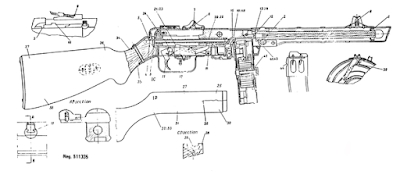One of Canaro's famous quintets, the late 1930s "Don Pancho" (named after one of Francisco's nicknames), has a surprisingly modern sound:
001. Quinteto Don Pancho - Instrumental "El garron" 1938 2:27
002. Quinteto Don Pancho - Instrumental "Alma en pena" 1938 2:46
003. Quinteto Don Pancho - Instrumental "Champagne tango" 1938 2:30
004. Gilda "No Me Arrepiento de Éste Amor cortina"
005. Enrique Rodríguez - Armando Moreno "Cómo Has Cambiado Pebeta" 1942 2:37
006. Enrique Rodríguez - Armando Moreno "El encopao" 1942 2:34
007. Enrique Rodríguez - Armando Morena "Cómo Se Pianta la Vida" 1940 2:23
008. Los Naufragos "Zapatos Rotos rock cortina" 0:34
First time I played this tanda of valses, united by their unusual musical texture:
009. Francisco Lomuto - Jorge Omar "Damisela encantadora" 1936 2:58
010. Juan de Dios Filiberto - Instrumental "Pensando En Ti" 1935 2:50
011. Alfredo De Angelis - Juan Carlos Godoy "Angélica" 1961 2:43
012. Los Iracundos "Puerto Montt rock cortina" 1971"
Recuerdos de Paris" has a special meaning to my heart, with its tale of regaining lost faith and love in a strange place, really a metaphor of my own path into the strange world of tango
013. Francisco Canaro - Roberto Maida "Recuerdos De París" 1937 3:12
014. Francisco Canaro - Roberto Maida "Ciego" 1935 2:57
015. Francisco Canaro - Roberto Maida "Nada Más" 1938 3:02
016. Viktor Tsoy "Kukushka rock cortina"
The voice of Lita, the singer consigned to oblivion by the tango society of her cruel age!
017. Edgardo Donato - Horacio Lagos y Lita Morales "Sinsabor" 1939 2:53
018. Edgardo Donato - Lita Morales y Romeo Gavioli "Yo Te Amo" 1940 2:50
019. Edgardo Donato - Horacio Lagos, Lita Morales, Romeo Gavioli "Triqui trá" 1940 2:34
020. Boney M "Daddy Cool cortina"
Di Sarli's milongas wonderfully combine contratiempo with musical suspenses
021. Carlos Di Sarli - Roberto Rufino "Zorzal" 1941 2:40
022. Carlos Di Sarli - Roberto Rufino "Pena Mulata" 1941 2:27
023. Carlos Di Sarli - Roberto Rufino "La Mulateada" 1941 2:22
024. Sandro de America "Yo te amo cortina"
025. Miguel Caló - Raúl Berón "Jamás Retornarás" 1942 2:28
026. Miguel Caló - Raúl Berón "Cuatro compases" 1942 2:43
027. Miguel Caló - Raúl Berón "Que te importa que te llore" 1942 2:44
028. Zhanna Aguzarova "Miracle Land cortina"
When Di Sarli's elegance met the choppiness of "D'Arienzo revolution", it yielded intensely rhythmic but complex instrumentals:
029. Carlos Di Sarli - Instrumental "La Trilla" 1940 2:21
030. Carlos Di Sarli - Instrumental "Shusheta" 1940 2:22
031. Carlos Di Sarli - Instrumental "Nobleza De Arrabal" 1940 2:07
032. Desireless "Voyage Voyage cortina"
033. Aníbal Troilo - Edmundo Rivero y Floreal Ruiz "Lagrimitas De Mi Corazón" 1948 3:00
034. Aníbal Troilo - Floreal Ruiz "Romance De Barrio" 1947 2:37
035. Anibal Troilo - Edmundo Rivero y Aldo Calderón "A unos ojos" 1949 3:10
036. Alla Pugacheva "Etot mir cortina"
037. Francisco Canaro - Ernesto Fama "Tormenta" 1939 2:38
038. Francisco Canaro - Ernesto Fama "No me pregunten porque" 1939 2:51
039. Francisco Canaro - Ernesto Fama "Te quiero todavia" 1939 2:54
040. Eruption "One way ticket cortina"
And now a break for a story and performances. The storyteller is Teague Goodvoice, a musician and dancer from the Blackfeet People. The Grass Song Dance reminds us about the age when the bison roamed and the Native Americans followed their herds, moving their teepees from one traditional site to another. The teepee sites were used generation after generation, and the "tipi rings" of stones for holding down the edges of the teepees also remained in use for generations. Even now there are over 200 tipi rings on Blackfeet Reservation.
After Teague's amazing, haunting flute music, time comes for two more traditional tango pieces for the performance of Lindsey and Ricardo: Pugliese's "Farol", and a great 2018 cover of milonga "El puntazo" by Tango Bardo.
And then, as always, it's up to D'Arienzo to return the dancers to the floor!
041. Juan D'Arienzo - Héctor Mauré "Infamia" 1941 3:07
042. Juan D'Arienzo - Héctor Mauré "El olivo (El olvido)" 1941 2:51
043. Juan D'Arienzo - Héctor Mauré "Enamorado (Metido)" 1943 2:33
044. ZZ Top "Sharp Dressed Man cortina"
"El Rey del Fox" is how Enrique Rodriguez was feted in Buenos Aires:
045. Enrique Rodriquez - Armando Moreno "Se ve el tren" 1942 3:11
046. Enrique Rodriguez - Armando Moreno "No Te Apures Por Dios Postillón" 1945 2:59
047. Enrique Rodriguez - Armando Moreno "Maruska" 1943 2:07
048. Viktor Tsoy "Good morning, last Hero cortina" 1989
049. Ángel D'Agostino - Ángel Vargas "Ahora No Me Conocés" 1940 2:35
050. Ángel D'Agostino - Ángel Vargas "Solo compasión" 1941 2:58
051. Ángel D'Agostino - Ángel Vargas "Ninguna" 1942 2:59
052. Los Naufragos "Zapatos Rotos rock"
a seldom played set of Biagi, tragic, powerful, with Rodolfo's beautiful piano taking second roles
053. Rodolfo Biagi - Hugo Duval "Alguien" 1956 3:14
054. Rodolfo Biagi - Hugo Duval "Esperame en el cielo" 1958 2:52
055. Rodolfo Biagi - Hugo Duval "Solamente dios y yo" 1958 2:33
056. Carlitos Rolan "Cuarteto1"
057. Orquesta Tipica Victor - Lita Morales "Noches de invierno" 1937 2:47
058. Orquesta Típica Víctor - Angel Vargas "Sin Rumbo Fijo" 1938 2:18
059. Orquesta Típica Victor - Mario Pomar "Temo" 1940 2:55
060. Victor Tsoy "Gruppa Krovi (cortina)"
Although Racciatti made a living playing D'Arienzo hits live, it is his own compositions and his two feminine vocals which make my heart skip a beat. Racciatti's piano player remains in a full D'Arienzo mode in these more melodic songs - what a powerful contrast!
061. Donato Racciatti - Olga Delgrossi "Hasta siempre amor" 1958 2:57
062. Donato Racciatti - Olga Delgrossi "Queriendote" 1955 2:49
063. Donato Racciatti - Olga Delgrossi "Sus Ojos Se Cerraron" 1956 2:47
064. Los Iracundos "Puerto Montt rock" 1971
A more rhythmic tanda ought to lead the way to the milongas. Many orchestras had to adopt fiercely rhythmic styles in the years immediately after "D'Arienzo revolution", and Láurenz's response for this challenge was unique and beautiful, contrasting the sadness of his bandoneon with the crazy a-la D'Arienzo vibe.
065. Pedro Láurenz - Juan Carlos Casas "Vieja Amiga" 1938 3:11
066. Pedro Láurenz - Martin Podesta "Al verla pasar" 1942 3:23
067. Pedro Láurenz - Juan Carlos Casas "No me extraña" 1940 2:44
068. Boney M "Daddy Cool cortina"
Alex Krebs explains that in the XXI century, it became utterly impossible to make money selling tango records, and he doesn't record anymore. The more grateful I am to him for the albums they released!
069. The Alex Krebs Tango Sextet "Ella Es Asi (feat. Enrique "El Peru" Chavez)" 2011 2:32
070. The Alex Krebs Tango Sextet "Largas las Penas" 2011 3:02
071. The Alex Krebs Tango Sextet "Negrito" 2011 1:53
072. Carlitos Rolan "Cuarteto1"
The Malerba tanda culminates with a composition from Ukraine, whose author, a violin teacher from Uman called Savely (Shevel) Zhadan, was killed in the Holocaust months before his son, a bright Argentine journalist Demetrio Zadan, introduced its score to the tango community there. I continue to research the history of this amazing song and people who made it possible, and feel privileged to play this tango, rescued from the jaws of death.
073. Ricardo Malerba - Orlando Medina "Embrujamiento" 1943 2:52
074. Ricardo Malerba - Antonio Maida "Encuentro" 1944 2:20
075. Ricardo Malerba - Orlando Medina "Gitana Rusa" 1942 2:47
076. Alla Pugacheva "Million Scarlet Roses (cortina)"
D'Arienzo outdoes himself for the crazy final minutes of the night
077. Juan D'Arienzo - Instrumental "La torcacita" 1971 2:31
078. Juan D'Arienzo - Instrumental "Zorro gris" 1973 2:03
079. Juan D'Arienzo - Instrumental "Este Es El Rey" 1971 3:10
080. Zhanna Aguzarova "Old Hotel cortina "
The Donato vals tands is built to lead to its final, deranged piece (inspired by the accordion rhythms of the Volga Germans who found safety in Argentina)
081. Edgardo Donato - Horacio Lagos "Quien Sera" 1941 2:14
082. Edgardo Donato - Horacio Lagos, Lita Morales, Romeo Gavioli "La shunca" 1941 2:35
083. Edgardo Donato - Horacio Lagos, Lita Morales, Romeo Gavioli "Noches Correntinas" 1939 2:23
084. AR Rahman "Ringa Ringa cortina"
This tanda owes its power to the first song, a cover of an antebellum tango from Riga, Latvia, composed by their "King of Tango" Oscar (Osher) Strok after a lurid escape to the 1920s Paris.
085. Florindo Sassone - Instrumental "Ojos Negros (Oscar Strok)" 1968 2:28
086. Florindo Sassone - Instrumental "Adios corazon" 1968 2:16
087. Florindo Sassone - Instrumental "Bar Exposicion" 1959 3:26
088. Viktor Tsoy "Kukushka cortina 2"
It starts extremely grounded ... and then the extremes rise to new highs:
089. Orquesta Típica Fervor de Buenos Aires - Instrumental "Quien Sos" 2007 3:08
090. Orquesta Típica Fervor de Buenos Aires - Instrumental "E.G.B." 2007 2:26
091. Analíá Goldberg y Sexteto Ojos De Tango - Instrumental "El Adios" 2011 3:13
092. Gilda "No Me Arrepiento de Éste Amor cortina" 0:40I
love valses of de Angelis, but remain skeptical about much of his tango output. But de Angelis's powerful late instrumentals are to die for!
093. Alfredo de Angelis - Instrumental "Pavadita" 1958 2:53
094. Alfredo de Angelis - Instrumental "Felicia" 1969 2:48
095. Alfredo de Angelis - Instrumental "El Tango Club" 1957 2:40
096. Queen "The show must go on cortina"
Fulvio Salamanca was "the" piano sound of Juan D'Arienzo for decades, but for his own orchestra, he found an amazing, and decidedly non-D'Arienzo vibe, perhaps in a string of beautiful coincidences. Salamanca overheard Guerrico singing his own composition in Uruguay and hired him on the spot. Salamanca's arrangement of the song caught the attention of tango's greatest violinist, Elvino Vardaro. And just then, the quality of records improved and allowed recording haunting high-pitch violin solos. Stunning!
097. Fulvio Salamanca - Armando Guerrico "Adiós Corazón" 1957 2:40
098. Fulvio Salamanca - Armando Guerrico "Todo Es Amor" 1958 2:47
099. Fulvio Salamanca - Armando Guerrico "Bomboncito" 1958 3:22
the one Cumparsita which comes with amazing pizzicato:
100. Enrique Rodríguez - Instrumental "La cumparsita" 1953 2:43
101. "silence30s" 0:31
And after silence, come a few more minutes of post-Cumparsita alternative tango / final hugs music, which I would describe as "anti-grounded" for sending our energy up to the sky rather than down into the floor:
102. Jason Mraz "I'm Yours" 2008 4:20
103. Damour Vocal Band "Sway - danceable cortina cut" 1:39



















